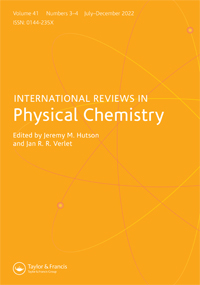Scaling and dimensionality in the chemical kinetics of protein filament formation
IF 2.5
2区 化学
Q3 CHEMISTRY, PHYSICAL
引用次数: 10
Abstract
The formation of elongated supra-molecular structures from protein building blocks generates functional intracellular filaments, but this process is also at the heart of many neurodegenerative conditions including Alzheimer’s and Parkinson’s diseases, where it occurs in an uncontrolled manner. When observed at appropriate concentration and time scales, the chemical kinetics of filamentous protein self-assembly exhibits the remarkable property of self-similarity: the dynamics appears similar as the observation scale changes. We discuss here how this property leads to crucial simplifications of the fundamental laws governing protein filament formation and the emergence of scaling laws that provide the basis for connecting microscopic events with macroscopic realisations of such processes. In particular, we review recent developments in the modelling of linear protein self-assembly phenomena in the light of the concepts of dimensional analysis and physical self-similarity. We show how these tools and concepts can be used to elucidate the nature of the scaling laws for filamentous protein self-assembly, which illuminate the ultimately simple mathematical and physical principles underlying this seemingly highly complex phenomenon, and are expected to guide further developments in the field of linear self-assembly.蛋白质细丝形成化学动力学中的尺度和维度
从蛋白质构建块形成细长的超分子结构产生功能性的细胞内细丝,但这一过程也是许多神经退行性疾病的核心,包括阿尔茨海默病和帕金森病,在这些疾病中,它以不受控制的方式发生。在适当的浓度和时间尺度下观察,丝状蛋白自组装的化学动力学表现出显著的自相似性:随着观察尺度的变化,动力学表现出相似性。我们在这里讨论这一特性如何导致控制蛋白丝形成的基本定律的关键简化,以及为将微观事件与这些过程的宏观实现联系起来提供基础的标度定律的出现。特别地,我们回顾了线性蛋白质自组装现象建模的最新进展,根据量纲分析和物理自相似性的概念。我们展示了如何使用这些工具和概念来阐明丝状蛋白自组装的缩放定律的本质,这些定律阐明了这种看似高度复杂的现象背后的最终简单的数学和物理原理,并有望指导线性自组装领域的进一步发展。
本文章由计算机程序翻译,如有差异,请以英文原文为准。
求助全文
约1分钟内获得全文
求助全文
来源期刊
CiteScore
14.20
自引率
1.60%
发文量
5
审稿时长
1 months
期刊介绍:
International Reviews in Physical Chemistry publishes review articles describing frontier research areas in physical chemistry. Internationally renowned scientists describe their own research in the wider context of the field. The articles are of interest not only to specialists but also to those wishing to read general and authoritative accounts of recent developments in physical chemistry, chemical physics and theoretical chemistry. The journal appeals to research workers, lecturers and research students alike.

 求助内容:
求助内容: 应助结果提醒方式:
应助结果提醒方式:


